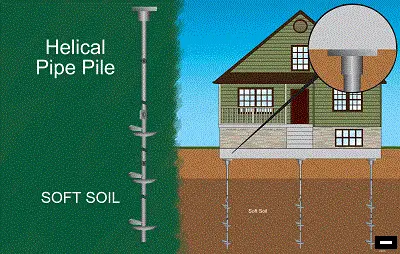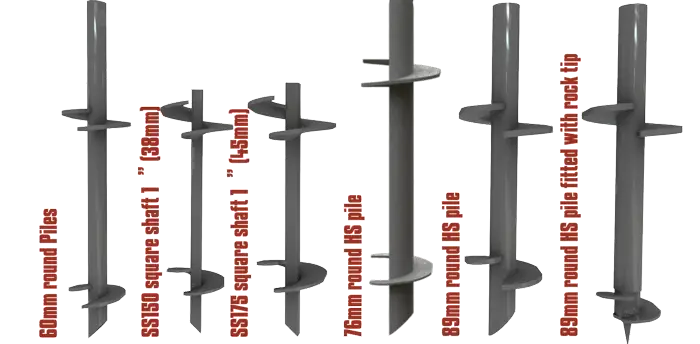Helical piles are increasingly being used for a broad range of construction applications covering dynamic industries. They are represented by steel shafts containing a series of circular low pitched steel plates. The helical plates are welded at tactical positions on the steel shafts to provide greater tension and compression bearing capacities on the foundation. The innovative technology used in helical piles has made the use of concrete on foundation an obsolete construction technology.

Advantages of Helical Piles
Compared to concrete, helical piles present a cost effective option for construction work. They are available in different lengths and thicknesses to suit various application requirements and ground conditions. Helical piles are popularly used in many civil engineering industry projects including buildings, communications, bridges and transportation systems. Helical piles are considered as a better eco-friendly option compared to concrete structures. They have higher versatility with dynamic uses in small base construction projects, restricted area construction and projects needing minimal vibration during the installation process.
Installation of Helical Piles
Installation will depend on ground conditions at the construction site and can take various forms. Some helical piles are raked at varying angles of up to 45°. They can be installed in any soil and the structure can either protrude from the ground or remain buried. Unlike concrete they can be installed in environmental conditions with low temperatures such as embankments. Helical piles are also used as a preferred option for supporting structures under tension or compression. When the helical anchors are installed within a deep foundation system the resulting loads are transferred from the shaft to soil through the bearing plates.

When to use
With a growing number of both commercial and residential applications, helical piles are now increasingly used across various foundation projects. They are ideally used,
- For foundations continuously exposed to moisture.
- For projects cited on unstable soil.
- When foundation or structural damages appear in existing buildings.
- To stabilize weak foundations or rectify foundation errors.
Use of helical piles is a recommended option when various foundation errors are made noticeable through structural failures like cracked interior plaster, large gaps appearing between windows, doors and frames, leaning walls, uneven floors and basement walls or foundations cracks. In essence helical piles are used for its rectifying, load bearing, feasibility and year-round cost effective installation characteristics.
